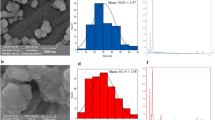Abstract
This study was undertaken to investigate the role of the glutathione-involved detoxifying mechanism in defending the tobacco BY-2 suspension cells against microcystin-RR (MC-RR). Analysis showed that exposure of the cells to different concentrations of MC-RR (0.1, 1 and 10 μg/mL) for 0–6 days resulted in a time and concentration-dependent decrease in cell viability and increase in reactive oxygen species (ROS) content. Reduced glutathione (GSH) and total glutathione (tGSH) content as well as glutathione reductase (GR), glutathione peroxidase (GPX) and glutathione-s-transferase (GST) activities significantly increased after 3–4 days exposure in the highest two concentration treated groups, while decreased until reaching the control values except for GPX at day 6. Oxidized glutathione (GSSG) content markedly increased compared with control in high concentration MC-RR treated group after 6 days exposure. The GSH/GSSG ratio was much higher than control in 10 μg/mL MC-RR treated group at day 4, but after 6 days exposure, the ratios in all treated groups were lower than that of the control group.


Similar content being viewed by others
References
Bradford M (1976) A rapid and sensitive method for the quantification of microgram quantities of protein utilizing the principle of protein-dye binding. Anal Biochem 72:248–254
Gehringer MM, Kewada V, Coates N, Downing TG (2003) The use of Lepidium sativum in a plant bioassay system for the detection of microcystin-LR. Toxicon 41:871–876
Habig WH, Pabst MJ, Jakoby WB (1974) Glutathione-s-transferase. The first enzymatic step in mercapturic acid formation. J Biol Chem 249:7130–7139
Haider S, Naithani V, Viswanathan PN, Kakkar P (2003) Cyanobacterial toxins: a growing environmental concern. Chemosphere 52:1–21
Hatcher EL, Chen Y, Kang YJ (1995) Cadmium resistance in A549 cells correlates with elevated glutathione content but not antioxidant enzymatic activities. Free Radic Biol Med 19:805–812
Hayes JD, McLellan LI (1999) Glutathione and glutathione-dependent enzymes represent a co-ordinately regulated defence against oxidative stress. Free Radic Res 31:273–300
Hissin PJ, Hilf R (1976) A fluorometric method for determination of oxidized and reduced glutathione in tissues. Anal Biochem 74:214–226
Hu ZQ, Liu YD, Li DH, Dauta A (2005) Growth and antioxidant system of the cyanobacterium Synechococcus elongatus in response to microcystin-RR. Hydrobiologia 534:23–29
Lawton LA, Edwards C, Codd GA (1994) Extraction and high-performance liquid chromatographic method for the determination of microcystins in raw and treated waters. Analyst 119:1525–1530
Mackintosh C, Beattie KA, Klumpp S, Cohen P, Codd GA (1990) Cyanobacterial microcystin-LR is a potent and specific inhibitor of protein phosphotases 1 and 2A from both mammals and higher plants. FEBS Lett 264:187–192
Maher P (2005) The effects of stress and aging on glutathione metabolism. Ageing Res Rev 4:288–314
Pflugmacher S (2004) Promotion of oxidative stress in the aquatic macrophyte Ceratophyllum demersum during biotransformation of the cyanobacterial toxin microcystin-LR. Aquat Toxicol 70:169–178
Racker E (1955) Glutathione reductase. Methods Enzymol 2:722–725
Towill LE, Mazur P (1975) Studies on the reduction of 2, 3, 5- triphenyltetrazolium chloride as a viability assay for plant tissue cultures. Can J Bot 53:1097–1102
Urbanek H, Kuzniak-Gebarowska E, Herka K (1991) Elicitation of defense responses in bean leaves by Botrytis cinerea polygalacturonase. Acta Phys Plant 13:43–50
Yin LY, Huang JQ, Huang WM, Li DH, Wang GH, Liu YD (2005) Microcystin-RR-induced accumulation of reactive oxygen species and alteration of antioxidant systems in tobacco BY-2 cells. Toxicon 46:507–512
Acknowledgements
The present investigation was supported by the National Basic Research Programs of China (2002CB412300, 2003CB716801) and the National Hi-Tech Project (2005AA601010) and the Project of Chinese Academy of Sciences (KSCX2-1-10).
Author information
Authors and Affiliations
Corresponding author
Rights and permissions
About this article
Cite this article
Huang, W.M., Xing, W., Li, D.H. et al. The Role of Glutathione Metabolism in Tolerance of Tobacco BY-2 Suspension Cells to Microcystin-RR. Bull Environ Contam Toxicol 80, 215–219 (2008). https://doi.org/10.1007/s00128-007-9348-7
Received:
Accepted:
Published:
Issue Date:
DOI: https://doi.org/10.1007/s00128-007-9348-7




